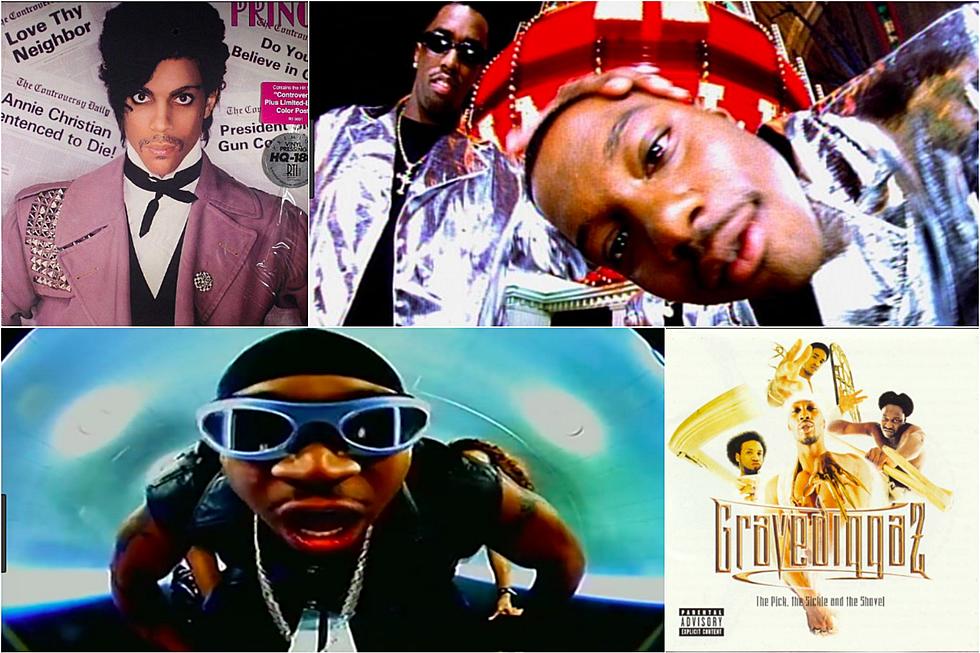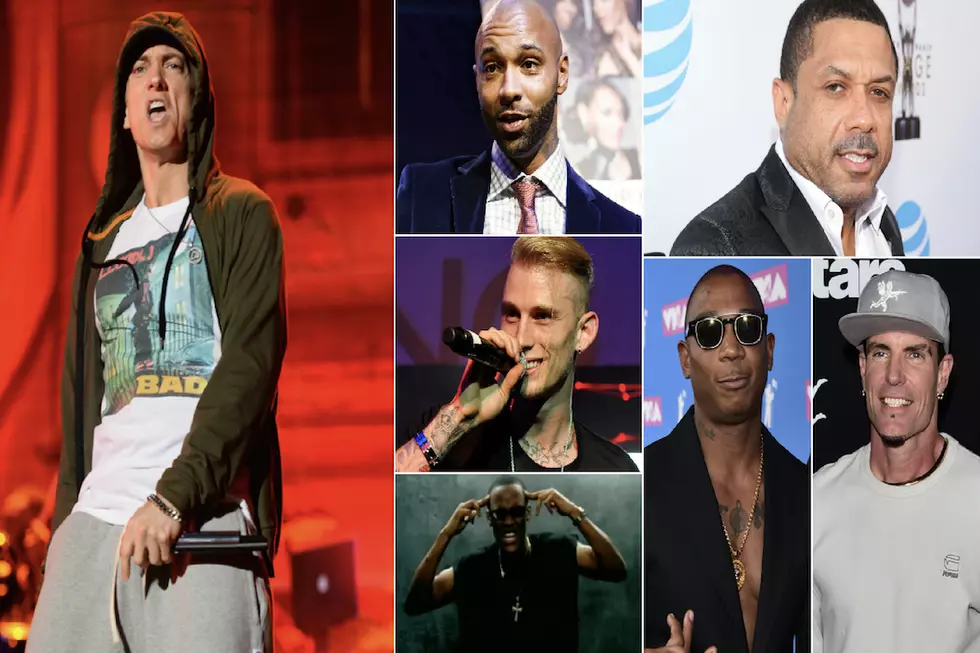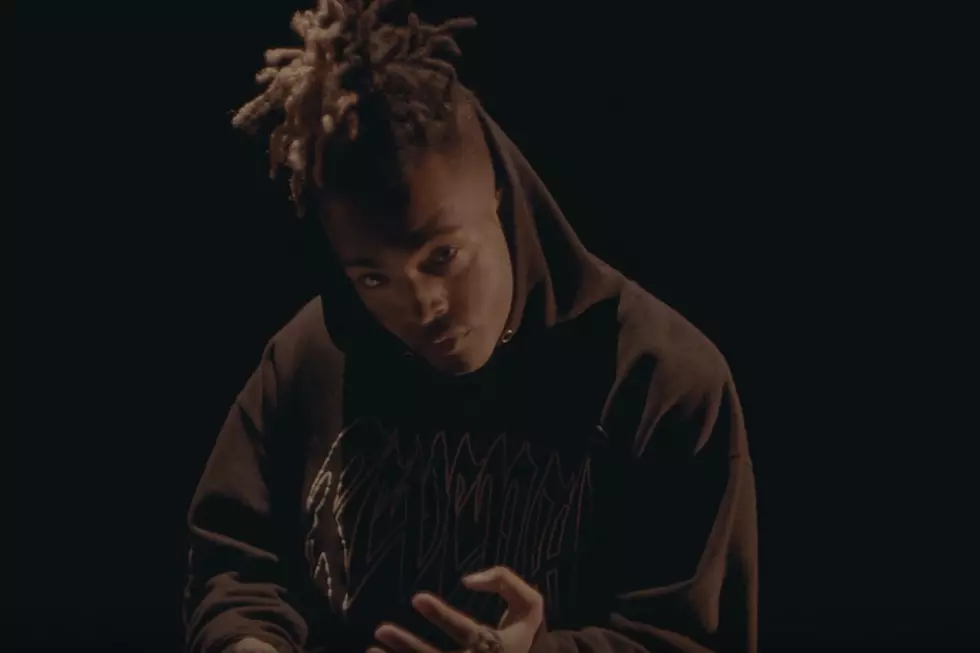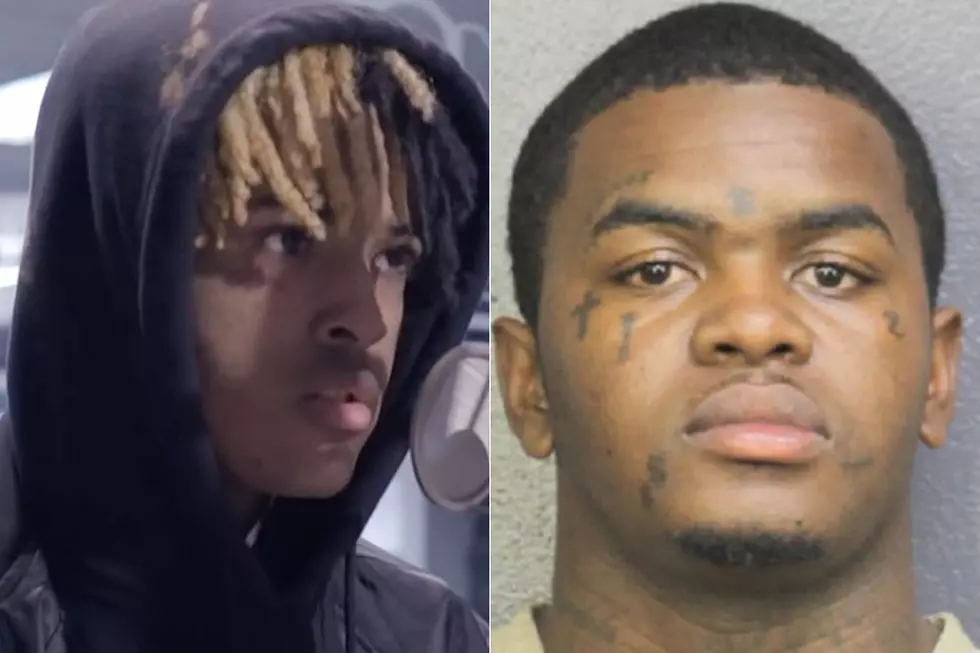
Hip-Hop Heresy: Lil Uzi Vert, Satan and Horrorcore History
In Shakespeare's Romeo & Juliet, Juliet famously poses the question “What’s in a name?”. Well, when it comes to 23 year-old rapper Lil Uzi Vert, the answer to that inquiry may produce an interesting answer.
According to conspiracy theorists (i.e. Reddit threads, the comment sections of hip-hop sites, and an obscure battle rapper named Daylyt), Lil Uzi Vert’s stage name is a subversive ode to the Prince Of Darkness himself. Rumor has it, if you say "Lil Uzi Vert" very quickly, what you’re really uttering is "Lucifer." That's right--this seemingly innocuous rap name is satanic trickery, forcing unsuspecting fans to hail the name of the Dark Lord . All part of Uzi’s plot to subliminally compel young listeners to blaspheme Jesus, and join him in serving the son of the morning.
As is the case with most urban legends, the likely truth is a lot less interesting. According to an interview with Complex, Uzi (born Symere Woods) got the idea for his stage name from someone on his block in North Philadelphia who described his rap delivery as “like a little uzi”. However, Uzi’s alleged connections to satanism don’t end with his rap moniker, and Uzi himself doesn’t shy away from or repudiate such claims. It’s safe to say he revels in and embraces the notoriety. Recently Offset of the rap group Migos lamented on Instagram about the rising tide of young rappers (including Uzi) wearing chains that display upside-down crosses. In an IG video, Offset implores his peers to ‘stop all that devil worship shit, and get right with God’ while brandishing his diamond encrusted crucifix. Uzi responded by tagging Offset in an IG post displaying a crude drawing of a smiley face with an inverted cross on its forehead and the numbers "666" scrawled at the bottom. Uzi further mocked Offset by asking if he’d be offering up his prayers while in "trap church."
Following this tiff between Offset and Uzi, 22-year old Atlanta-based rapper SahBabii (responsible for the breakout hit "Pull Up With the Stick") injected himself into the ongoing controversy. Defending the use of the inverted cross and 666, SahBabii claimed that he isn't using such symbols to indicate satanism; he'd repurposed them as part of a budding belief system of his own creation called "Unknownism." SahBabii asserts that Unknownism isn’t about Satan and their use of the inverted cross has no connection to it’s Saint Peter origins (he who was famously crucified upside-down.) Unknownism is an ideology for open minded people who are “seeking truth” and “don’t follow the wave of shit that’s not been proven” according to his IG post. “Unknowns," as he refers to his followers, ironically believe in the unproven claim that 666 is not the mark of the beast, but stands for 6 protons, 6 electrons, and 6 neutrons which, according to them, is the “carbon make up” of melanin and, thus, the essence of Black people.
SahBabii’s belief system--with it’s punk band aesthetics and young adult angst--amounts to a sort of Hot Topic Hotepism sect than to serious Luciferianism. The beef between SahBabii and Offset eventually devolved into them trading videos of themselves brandishing guns, making violent threats, and lobbing homophobic epithets at each other- not unlike countless other rap beefs.
While It’s unclear if Uzi considers himself an “unknown," it’s apparent that he has no plans to discard the ‘satanic’ symbolic references in his art.
This is evidenced in the two covers for his official debut album Luv Is Rage 2, on which he collaborated with OFF-White designer Virgil Abloh. The first cover, a black and white collage, features a photo of a winking peace sign-toting Uzi centered and obscured by two thick white pieces of tape, while smaller, horned and winged Lil Uzi "devils" adorn the corners among a backdrop of doodles of skulls, fractured hearts, stacks of cash, and the album’s tracklisting. The second cover features more thick tape and Abloh’s industrial influence; with a black and white photo of Uzi donning his inverted cross chain, with illustrated horns and wings placed in the center. The track "444+222" sports the albums most hamfisted name--it doesn’t call for much decoding. It’s content is actually typical rap fare, featuring an infectious hook where Uzi raps, "Breathe In/Breathe Out/Shake that ass/speed up/go fast/slow down/4-4-4-4/million on me, Jay Z/Count up fuck nigga, pay me."
While his music does at times does touch on subjects like depression and feelings of isolation, for someone that many claim to be in cahoots with Lucifer, his content is far from dark. Uzi often refers to himself as a "rock star" more frequently than a rapper, however his music is largely trap centered and arguably pop adjacent. Uzi’s public persona for that matter is rather bubbly and likable, as he’s becoming more notorious for his self confidence and shoulder shimmying dances than gloom and eeriness. Even the lyrics from "XO Tour Llif3," his popular melodically nihilistic hit about death, barely register as disturbing--especially in comparison to a lot of the material of his hip-hop forefathers.
The use of what some might call dark imagery and graphic, disturbing content is by no means a new angle invented by today's supposedly "lost" generation. Rap has a long history of experimenting with “demonic” themes, blasphemy, and horror film-inspired subject matter. The "horrorcore" subgenre has a long history in rap music. Prior to their more famous incarnation with Scarface and Willie D, the Ghetto Boys' sparked controversy with their 1988 track "Assassins" from their debut album Makin Trouble. The song featured group members Bushwick Bill, DJ Ready Red, Sire Jukebox and Prince Johnny C. rapping about disemboweling women with knives, shooting priests in the head, and taking a chainsaw to hitchhikers. Insane Clown Posse’s Violent J regards "Assassins" as the first horrorcore song ever recorded. In 1989, a then 16 year old Detroit rapper named Esham released his seminal underground debut Boomin Words From Hell, using the city of Detroit as a metaphor for eternal damnation, Esham fused hard rock beats with lyrics about evil, drug use, paranoia and sex. The album featured tracks like "Devil’s Groove," "Amen Another Sin" and "Word For Word," the latter a song that was later censored in it’s re-release because of the lyrics “I’m not an atheist/but what has God done for me?” The content of Boomin Words From Hell was so dark, Esham (born Rashaam Smith) recalls locals blaming any misfortune that befell them on having listened to his music.
While Esham rejects being credited as the founder of horrorcore (he prefers to say he pioneered acid rap), he later collaborated with The Flatlinerz in 1995 on a single for horror film The Fear's soundtrack. The Flatlinerz are a self-professed horrorcore group and brainchild of Def Jam co-founder Russell Simmons. Comprised of Russell’s nephew Jamal Simmons (aka Redrum), and two other rappers; Tempest and Gravedigger, The Flatlinerz released USA (Under Satan’s Authority) in 1994. Videos for the songs "Live Evil" and "Satanic Verses" featured scenes of the trio rapping in a graveyard, hanging from nooses, eating guts from a corpse, and rhyming atop a crucifix. While The Flatlinerz were critically panned and commercially dismissed, rap supergroup Gravediggaz drew more attention due to some of the principals involved. Featuring established artists (performing as alter egos) Prince Paul (The Undertaker), Frukwan (The GateKeeper), Poetic (The Grym Reaper) and RZA (The RZArector), Gravediggaz saw a strong reception for their album 6 Feet Deep in 1994. Exploring the topics of death, suicide, psychopathy, hell (while embracing some virtues of the Nation of Gods and Earths), 6 Feet Deep peaked at #32 on the Billboard 200. The single "Diary Of A Madman" peaked at No. 82 on the Billboard 100.
Late Harlem rapper Big L often boasted being the originator of horrorcore with his 1993 single "Devil's Son." L rhymes, "On my skull the 666/When I catch fits my Mom picks up the crucifix/And I kill chumps for the cheapest price/I’m rollin with Satan not Jesus Christ." The song’s hook was a looped sample of Nas’ infamous opening verse from Main Source’s "Live At The Barbeque" ("When I was 12/I went to hell for snuffin Jesus.") The 1990’s underground rap scene also saw the rise of acts like Necro, who released gory songs like "Bury You With Satan." The late Lord Infamous (aka The Scarecrow), who would later on co-found Oscar winning Memphis rap group Three 6 Mafia, released his first solo album Lord Of Terror in 1992, and the album explored themes of Luciferianism, mass murder, and torture. In a 2009 interview with Southern Hospitality, Lord Infamous explained what inspired his subject matter: “I didn’t wanna do that kind of gangbang type of thing so I said I’ma take it to another level, I’m gonna do something dark. What’s worse than a gangbanger? Evil--Satan itself. So I said I’m gonna venture into that side of it and that’s how that came about.”
As trends shifted in the late 90’s, less conceptual and macabre rap acts forayed into dark subject matter while managing to garner huge commercial success via radio hits. In 1998, Yonkers rapper DMX released his acclaimed debut album It’s Dark And Hell Is Hot. The album, which peaked at #1 on the Billboard top 100, featured soul baring, grim subject matter, with DMX's lyrics focusing on his inner moral conflicts with greed, sin and violence--the constant tug-of-war for his soul between God and Satan. While singles like "Get At Me Dog" and "Ruff Ryder’s Anthem" were crossover hits, the album was populated with ominous storytelling on songs like "Let Me Fly" and "Damien"--the latter of which features X going back-and-forth with the devil. His sophomore album Flesh Of My Flesh featured cover art displaying a naked DMX covered in blood, and includes a sequel track called "Omen (Damien II)" which features a guest appearance from infamous shock rock provocateur Marilyn Manson.
More recently, rap collective Odd Future Wolf Gang Kill Them All (whose frontman Tyler The Creator is adamant about not being horrorcore) drew controversy for music touting references to rape, necrophilia, and blasphemy--and often toyed with images of inverted crosses, occult references and the Mark of the Beast. Similarly, enigmatic internet sensation Lil B AKA The Based God discussed demonic possession and Satan in much of his music. His 2011 album Angel Exodus includes cover art of an illustrated depiction of Lil B as Jesus, nailed to a crucifix draped with women’s underwear. His video for the 2010 song "Look Like Jesus" was filmed in a church, with B rapping: "I’m God I look like Jesus/and I’m coming with that mutherfuckin heater/bitch suck my dick." Both acts caused quite a stir on Christian websites and among YouTube’s faithful occult experts.
Despite the constant chatter regarding generational conflict in rap music, much of the trends are cyclical. Old heads, purists and conservative rap fans who might clutch their collective backpacks at Lil Uzi Vert’s eccentric or “feminine” personal style and his devilish symbolism might want to brush up on the genre’s history--as should young “edgy” upstarts who think they’re venturing into unexplored terrain. Tapping into societal taboos is a time honored aspect of not only rap music, but popular music, in general. From blues musician Robert Johnson (whose classic "The Crossroads" references the folklore of selling one's soul to the devil to play guitar), to Jimi Hendrix and JAY-Z, often artists flirt with or embrace these controversies for amusement, marketing, shock value or some combination of all three. And the behavior typically leads to accusations of leading the youth towards a path of moral decay. This is pretty rote stuff.
In the case of Lil Uzi Vert, all of the aforementioned seems likely. He’s been discussing working on new music with one of his foremost musical idols in Marilyn Manson. Much like we’ve come to understand (and smirk at) Manson's once-shocking theatrics; Uzi’s appeal is not that sinister--a large part of his draw is connecting with young people who feel like social outcasts, disillusioned with societal norms. With all the handwringing about youth and rap, Uzi’s artistic approach and even that of his peers, isn’t unprecedented.
Historically, rap artists who push the boundaries and use their creative expression to shock and disgust have always had a space. The approach has yet to get old. And neither has the outrage.
Watch Gravediggaz Video for "Diary of A Madman":
Watch Esham's Video for "Mental Stress":
Watch Geto Boys' Video for "Mind of a Lunatic":
Watch Lil B's Video for "Look Like Jesus":
More From TheBoombox









